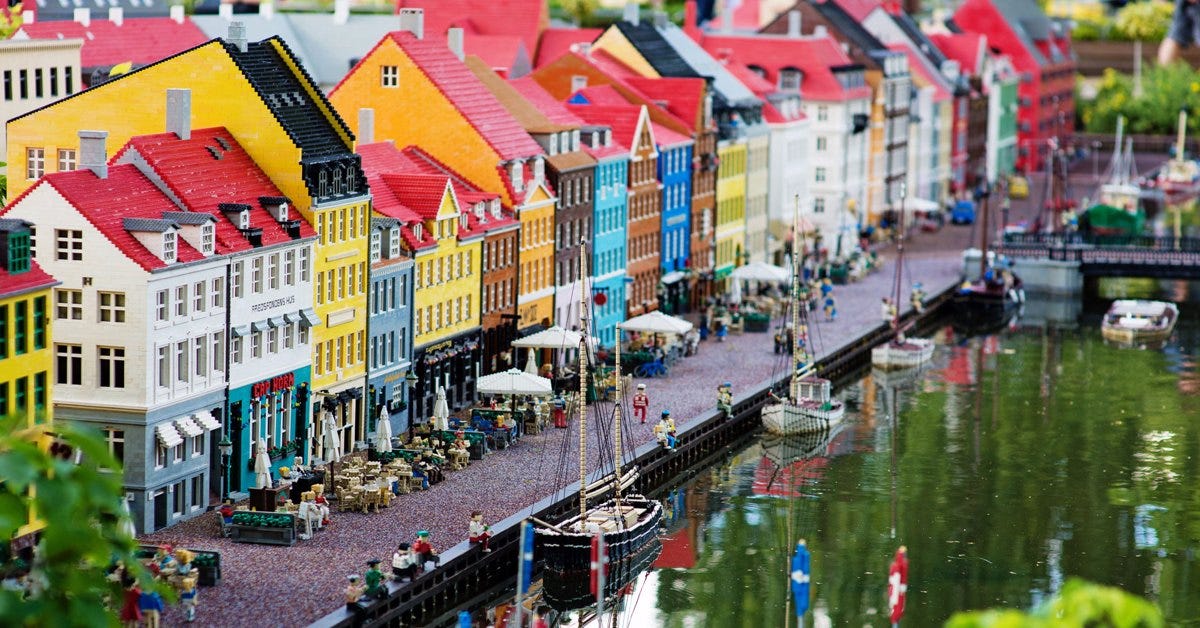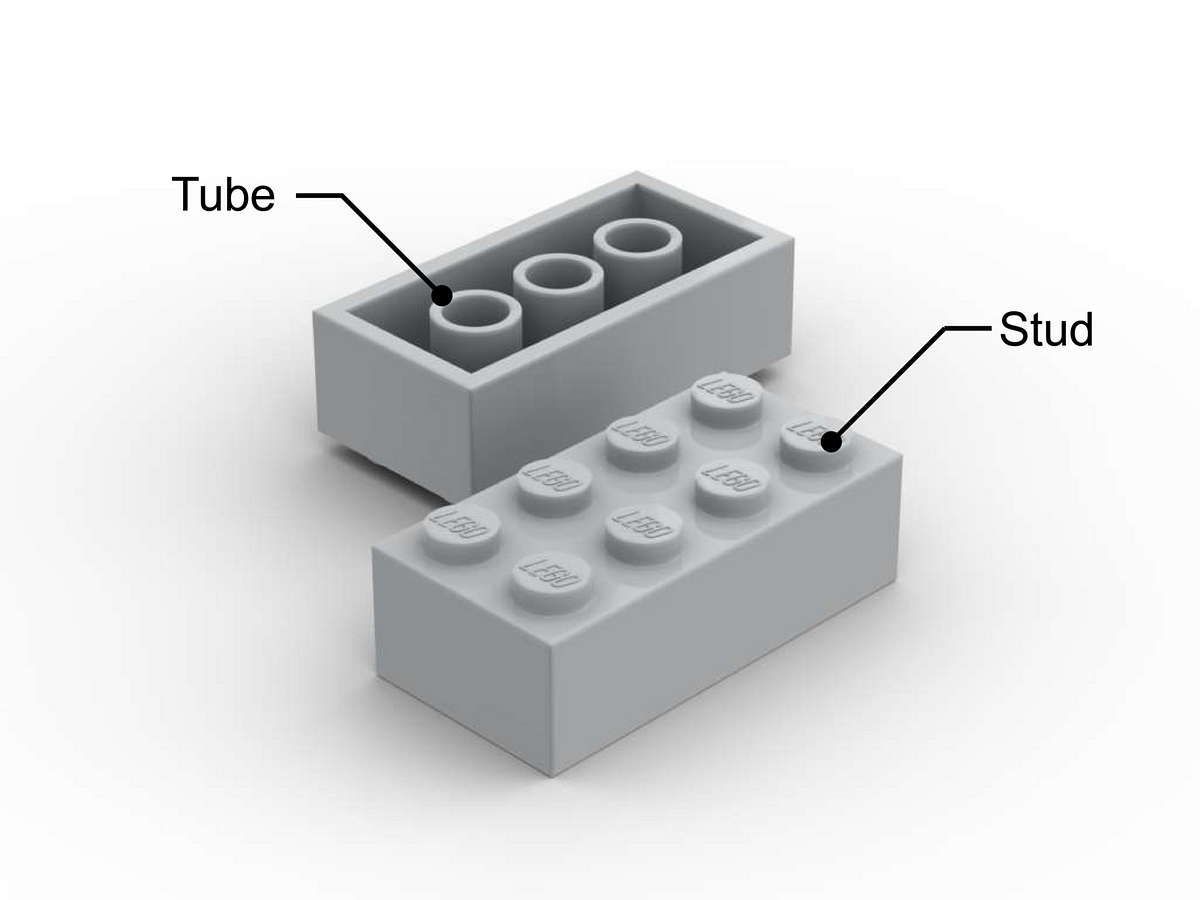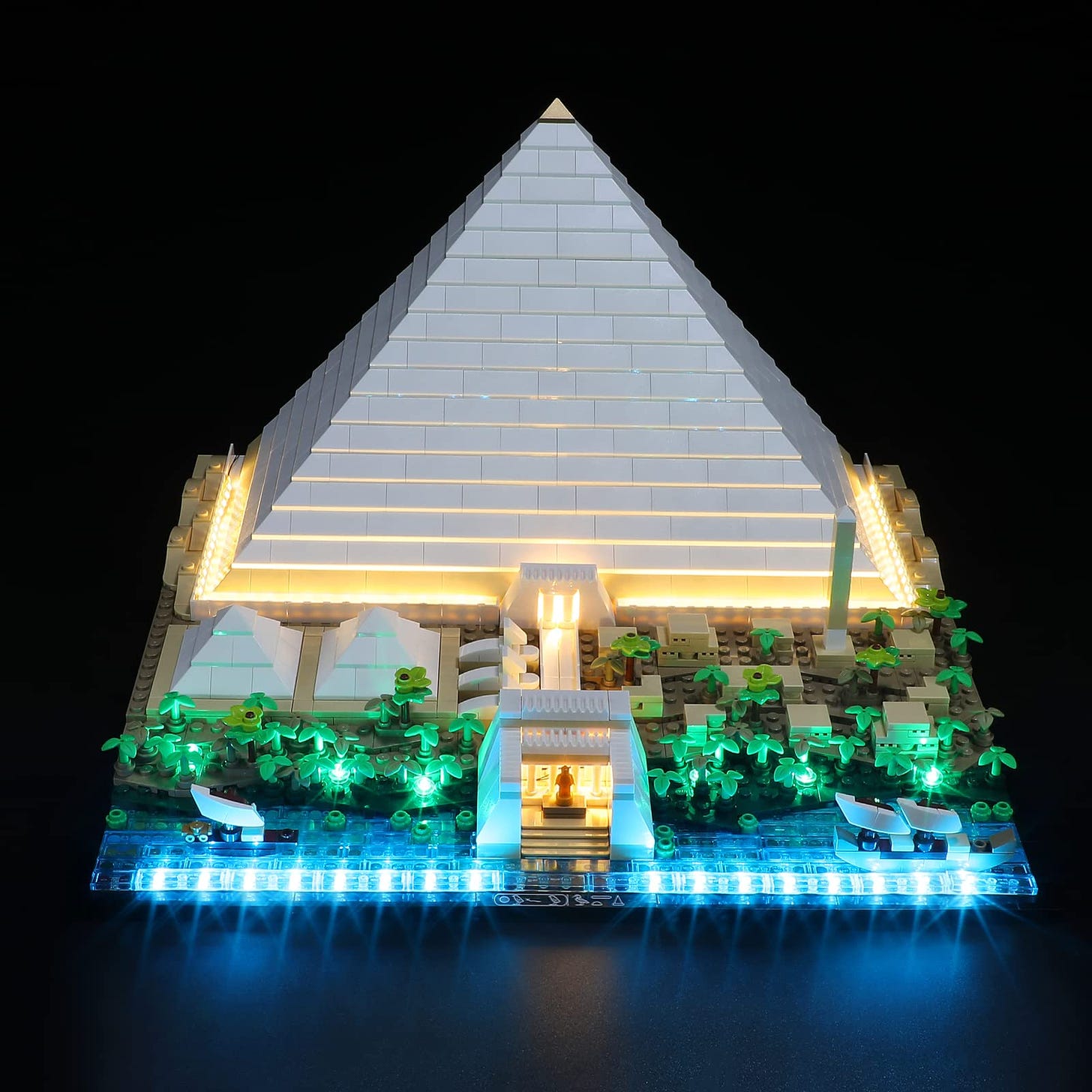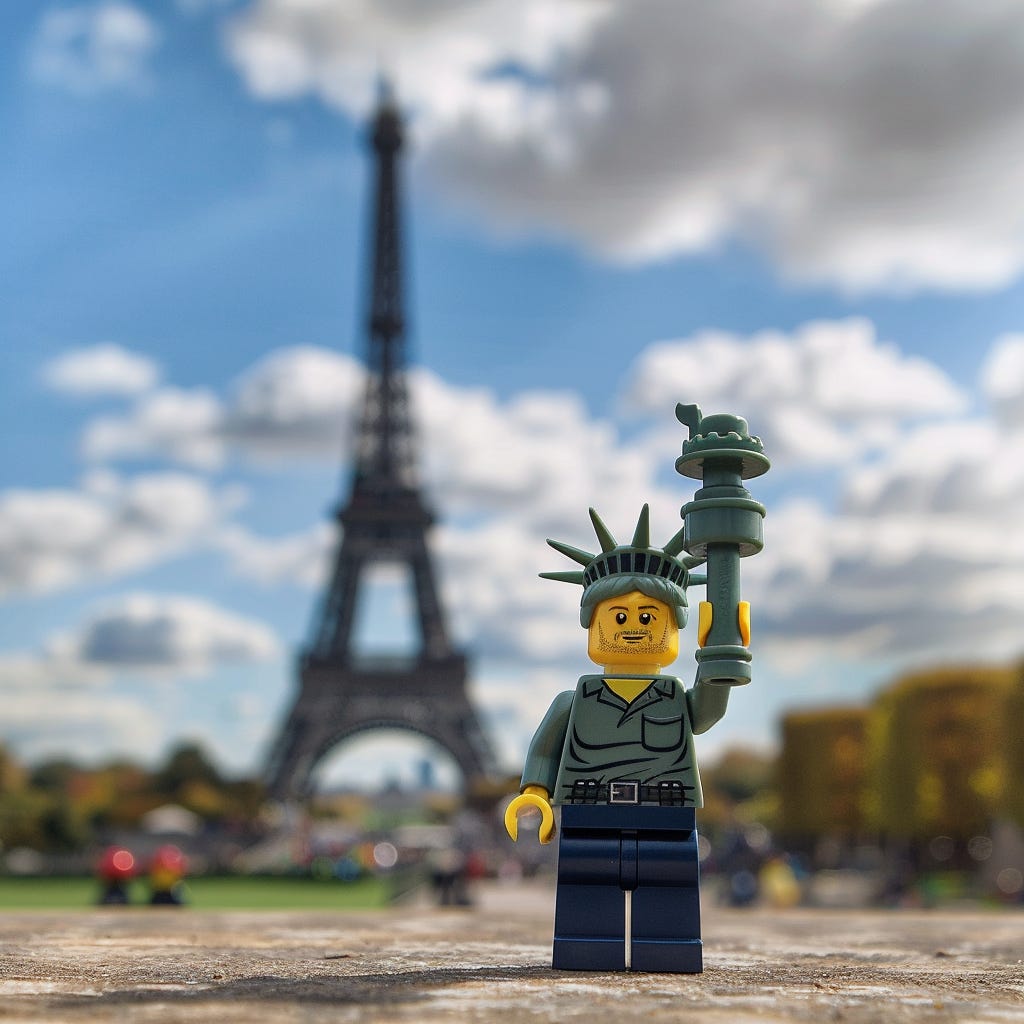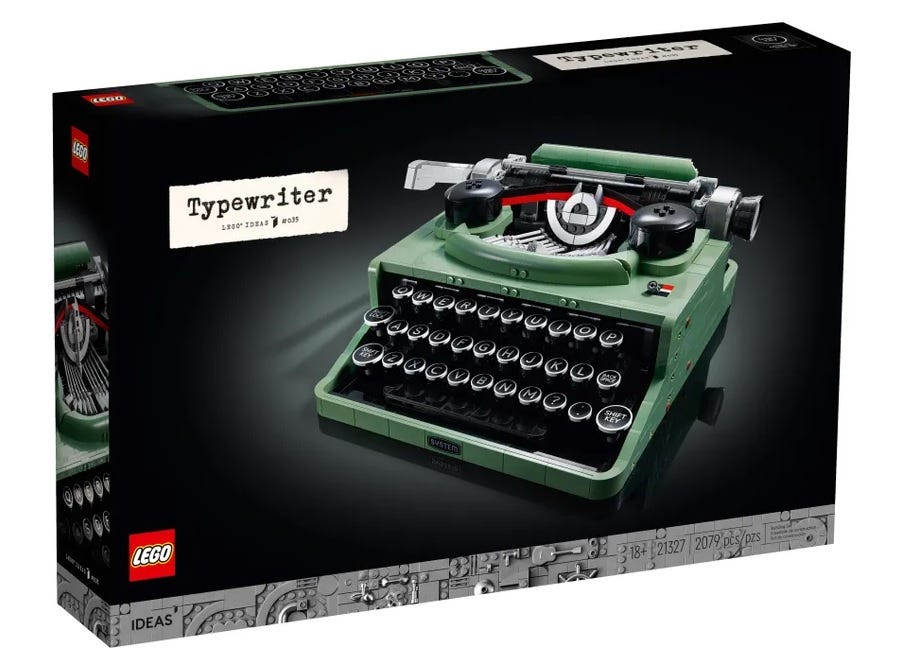RATLINKS: LEGO MY EGGO
The Interlocking Story of LEGO - How building blocks became a cultural icon and a smart investment. It's plastic and fantastic!
Earlier this month I spent far too much time helping my son complete a Lego, but this wasn’t just any Lego it was a Lego Technic Bugatti Bolide #42151
Later while perusing The New York Post, one of America’s greatest periodicals, I came across an article that said “I invest in Lego because it’s better than stocks, bonds and gold — and I’ve made $500K in 2 years”
Leading me to wonder:
What’s the deal with these little blocks?
After discovering a 665-page book entitled “The Secret Life of Lego Bricks” and a financial research paper called LEGO - The Toy of Smart Investors. I tasked my assistant (me) to distill these documents into a shorter digestable format that Ratlinks readers far and wide have come to enjoy.
LEGO: The Plastic Empire That Built Dreams and Fortunes
When you think of LEGO, you likely imagine hours of childhood play, building colorful worlds from simple plastic bricks. They're not just toys anymore. LEGO has transformed into a complex, strategic brand story and investment powerhouse, outperforming the S&P 500 over the past decade.
In a world of fleeting trends, LEGO has built a legacy that stands the test of time—proving that sometimes, the simplest ideas can construct the grandest visions.
But how did this Danish toy maker transform from a small family business into a pop culture juggernaut?
The answers lie in a fascinating journey of innovation, strategic pivots, and an uncanny ability to tap into the cultural zeitgeist. Dive into the colorful, interlocking world of LEGO, where childhood dreams meet adult nostalgia. In this plastic universe, simple plastic bricks build both fantastical worlds and real-world fortunes bridging imagination and tangible success in a way few have ever achieved.
From Wooden Ducks to Plastic Dynasties
Billund, Denmark 1932.
In a modest carpentry workshop, Ole Kirk Christiansen crafts wooden toys, unaware he's laying the foundation for a global phenomenon. The Great Depression had just ravaged Christiansen's carpentry business, forcing him to downsize from building houses and furniture to crafting miniature versions of his designs.
His first big seller?
A wooden duck on wheels. Who could have guessed that this simple toy would be the precursor to an empire built on plastic bricks?
Fast forward to 1947. World War II has ended, and a new era of innovation is dawning. LEGO makes a pivotal gamble, investing in an injection molding machine - one of the first in Denmark. It's a risk that would change the toy industry forever. By 1958, after years of experimentation, the iconic interlocking brick we know today clicks into existence.
Kjeld Kirk Kristiansen, Ole's grandson and former LEGO CEO, once reflected on the company's journey: “Creativity is so delicate a flower that praise tends to make it bloom, while discouragement often nips it in the bud.” This philosophy became the bedrock of LEGO's innovative spirit, driving the company from simple wooden toys to complex plastic worlds.
The Humble Brick: A Masterpiece of Precision Engineering
At first glance, a LEGO brick seems unremarkable. But this small plastic rectangle hides an engineering marvel that would make NASA proud. Each brick is manufactured to a staggering tolerance of 0.005 millimeters – less than the width of a human hair. This precision ensures that every LEGO piece, regardless of when or where it was made, fits perfectly with any other. Welcome to LEGO, where everything is AWESOME!!!
The standard LEGO brick is made from ABS (Acrylonitrile Butadiene Styrene) plastic, chosen for its durability, color-fastness, and ability to hold shape under stress. The material is so tough that a brick would have to endure the weight of 375,000 other bricks before it would start to crack.
LEGO's commitment to quality is legendary. Jørgen Vig Knudstorp, former LEGO CEO, famously stated: “We only recall about 18 bricks per million produced.” This level of precision ensures that a brick made during the Moon landing will still satisfyingly click with one fresh off today's production line.
The Secret Sauce: Studs, Tubes, and Infinite Possibilities
LEGO's genius lies in its patented interlocking system, a masterpiece of simplicity and functionality. The iconic studs on top (called "clutch power" by LEGO designers) match perfectly with the tubes underneath, creating a bond that's both sturdy and easily breakable.
The stud-and-tube coupling isn't just for show. When two bricks are pressed together, the studs are slightly compressed. This compression, combined with the friction between the bricks, creates a surprisingly strong connection. Yet, the exact dimensions allow for easy separation when needed.
This ingenious design allows for virtually limitless combinations. Mathematicians have calculated that just six 2x4 LEGO bricks can be combined in over 915 million ways. Expand that to 100 bricks, and the possibilities become truly astronomical – more combinations than there are atoms in the universe.
The LEGO system is built on a precise unit of measurement. The smallest LEGO piece, a 1x1 plate, measures exactly 8mm x 8mm x 3.2mm. Every other LEGO element is a multiple of these dimensions, ensuring perfect compatibility across the entire system.
As LEGO designer Simon Kent put it: “We see LEGO bricks as a language. If you learn it, you can express yourself in infinite ways.”
Beyond Bricks: The LEGO Universe Expands
While the classic brick remains the star, LEGO's supporting cast has grown impressively diverse. The LEGO system now includes over 3,700 different elements, each designed to perfectly integrate with the core brick design.
Specialized pieces like hinges, joints, and Technic elements add functionality and movement to creations. Slopes and curves allow for more organic shapes. Transparent pieces bring light and color into builds. Each new element is meticulously designed to maintain compatibility with the entire LEGO system, past and present.
The introduction of the minifigure in 1978 was revolutionary. These tiny, yellow-headed characters, standing exactly four bricks tall, transformed static models into vibrant scenes teeming with life and stories. Today, LEGO produces over 3.7 billion minifigures annually – almost half of the world's human population!
Pop Culture's Favorite Building Blocks
LEGO's evolution from a simple brickmaker to a pop culture phenomenon is a tale of plastic alchemy, turning childhood nostalgia into cultural gold.
In the late 1970s with the birth of LEGO Town, gone were the days of mere buckets of bricks. Suddenly, children could construct entire cityscapes, complete with firehouses, police stations, and bustling streets. But LEGO's masterstroke came in 1978 with the introduction of the minifigure. These tiny, yellow-headed citizens transformed static models into living, breathing worlds. Children weren't just building towns; they were populating them with characters, each a portal to endless stories.
A seismic shift came in 1999 with licensed sets. LEGO partnered with Star Wars, and the toy galaxy exploded. Suddenly, fans could build their own Millennium Falcon or recreate the Battle of Hoth in their living rooms. The Force was indeed strong with this one – LEGO Star Wars sets have sold over 600 million units worldwide.
But LEGO didn't stop at a galaxy far, far away. They invaded Hogwarts with Harry Potter sets, and assembled the Avengers brick by brick. The company has even ventured into the realm of adult fans with its Ideas and Creator Expert lines. These sets cater to sophisticated tastes, offering buildable versions of Central Perk from "Friends," the Beatles' Yellow Submarine, and even a typewriter that would make Tom Hanks envious.
Perhaps LEGO's most brilliant move was turning fans into collaborators. The LEGO Ideas platform allows builders to submit their designs, with the best becoming official sets. A masterstroke of community engagement, turning passionate fans into brand ambassadors and idea generators. This strategy culminated in "The LEGO Movie" (2014), a meta-narrative celebration of LEGO's universe. Grossing $468 million worldwide, it proved LEGO could not only adapt others' stories but also craft compelling narratives of its own.
The Investment Hiding in Your Attic
Another layer of the company's genius lies in its ability to create scarcity amidst abundance. Limited edition sets and blind bag minifigure series sparked a collector's frenzy. Want a Mr. Gold minifigure? Be prepared to shell out over $40,000 for this rare beauty. LEGO is not just child's play; it can be a full-blown investment strategy.
A study by the Higher School of Economics in Moscow found that from 1987 to 2015, LEGO sets yielded an average return of 11% per year – about 8% when adjusted for inflation outperforming traditional investments like stocks, bonds, and even gold.
For the real finance bros: LEGO returns are not exposed to market, value, momentum, and volatility risk factors but have an almost unit exposure to the size factor. A positive multifactor alpha of 4%–5%, a Sharpe ratio of 0.4, a positive return skewness, and low exposure to standard risk factors make the LEGO toy and other similar collectibles an attractive alternative investment with good diversification potential.
Certain sets have seen astronomical returns. The 2007 Ultimate Collector's Millennium Falcon, originally retailing for $499.99, has sold for over $15,000 on the secondary market. That's a return that would make Warren Buffett envious.
From Playroom to Boardroom
LEGO's appeal transcends age, finding a home in both kindergarten classrooms and corporate teambuilding exercises. This universal charm stems from LEGO's unique ability to balance structure with freedom, and simplicity with complexity.
The LEGO system's educational value is immense. It teaches spatial reasoning, improves fine motor skills, and introduces basic concepts of engineering and architecture. Many adult LEGO enthusiasts credit their childhood brick-building with inspiring their careers in design, engineering, or architecture.
David Beckham, the soccer superstar known for his LEGO obsession, once said: "LEGO for me has always been a calming thing. The hours I've spent building with my kids are some of my fondest memories."
The Future: It’s Plastic & Fantastic
As we hurtle into an increasingly digital age, LEGO's tangible, tactile play experience offers a refreshing counterpoint. It's a creative outlet, a learning tool, a collectible, and an investment vehicle all rolled into one.
LEGO's former CEO, Jørgen Vig Knudstorp, summarized the company's ethos perfectly: "We're not just selling plastic bricks; we're selling the tools that unleash human creativity and the promise that you can build anything."
So the next time you hear that distinctive click of LEGO bricks connecting, remember: you're not just playing with toys or making an investment. You're engaging with a system so perfectly designed, that it's remained unchanged for over half a century while continuously reinventing itself. In the fast-paced world of consumer goods and fickle markets, that's not just impressive – it's revolutionary.







